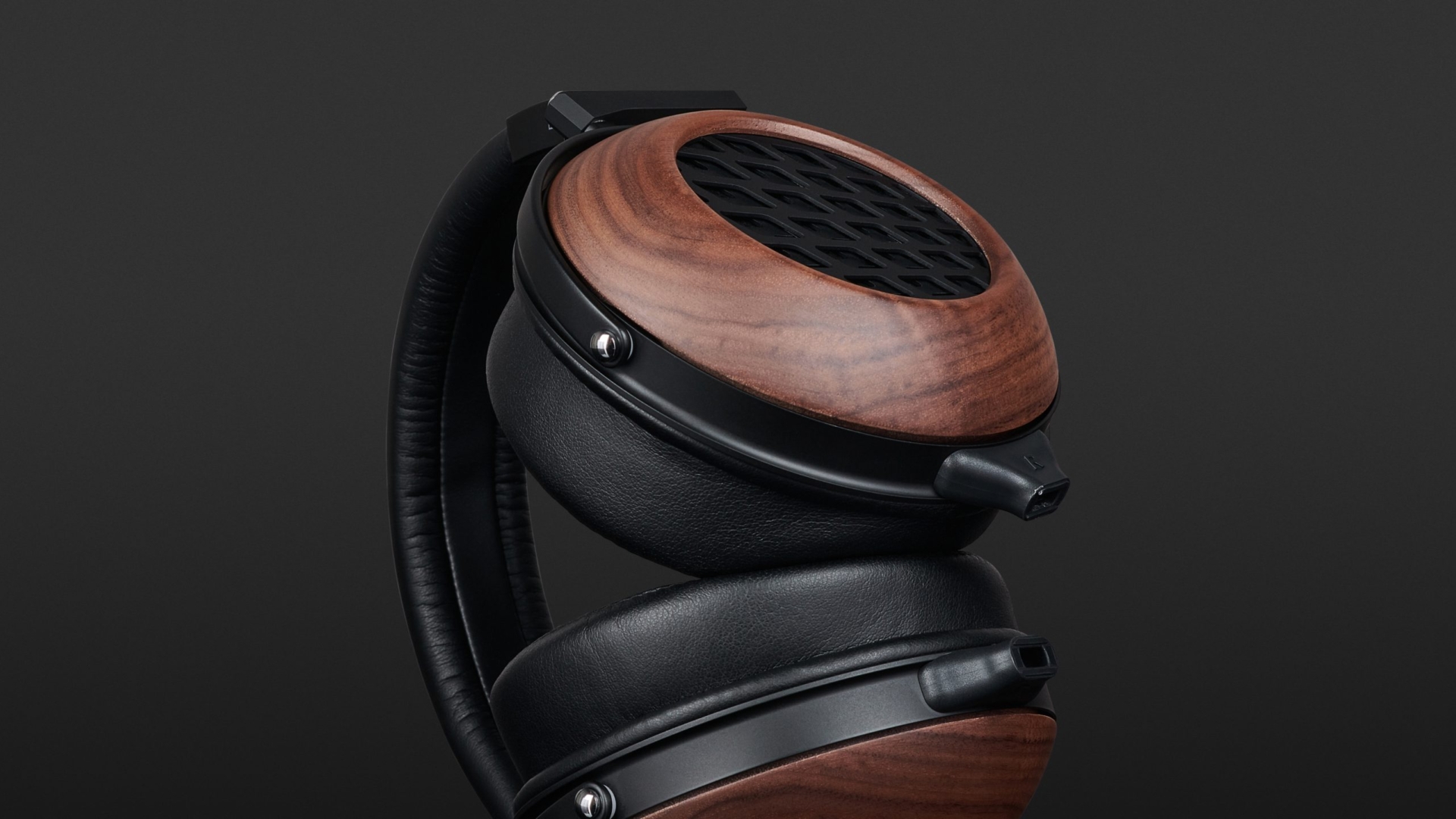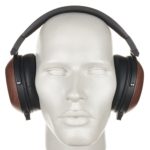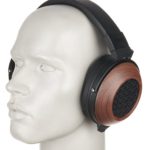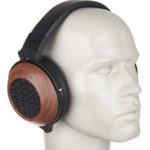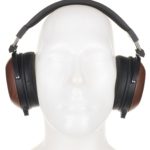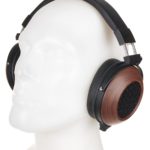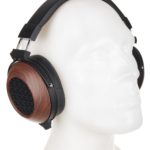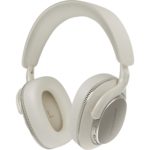Fostex has opted for a circumaural, open design for the high-end TH808 model. The elegant appearance of these headphones matches the sound with fine nuances and great wearing comfort. And all this at a surprisingly good price-performance ratio. Having said that, buyers can expect a somewhat “undercooled” sound from the TH808.
- Excellent sound
- Lightweight
- High wearing comfort
- Easy handling
- High-quality materials
- Somewhat loose fit
The Fostex TH808 are the little brother of the Fostex top model TH909 and feature identical drivers for a significantly lower purchase price.

With the TH808, Fostex have added more circumaural high-end headphones to their range. And it’s not just its open design that is reminiscent of their top model, the TH909. We take a closer look in our review and see what they have to offer.
Fostex TH808 – The package
The Fostex TH808 headphones come with a 3-metre-long fabric-covered straight cable. This unbalanced supply cable can be replaced with an optionally available balanced cable with a four-pin XLR connector. The supplied cable has a 6.35mm jack plug on one end, which is gold-plated for corrosion protection. On the other end, there are two-pin plugs in CIEM format. The cable itself is made of low-oxygen copper on the inside. A faux leather bag with a cord is provided to store and transport the headphones.
Material and construction of the Fostex TH808
The design of the Fostex TH808 is typical of Fostex, striking but timeless. Matte black tones dominate and are complemented by the grain of brown real wood and a few accents in silver metal. The ear cups are made of aluminium and are, therefore, particularly lightweight. The replaceable ear pads are made of high-quality, soft imitation leather. This also applies to the cover of the lightly padded headband. On the back of the shells are covers made from black walnut wood. They include a two-layer grille, familiar from the TH909, which protects the interior from foreign bodies and ensures the open design of the TH808.
The design, materials and workmanship all create a very good impression. The connections for the cable are located in small extensions on the undersides of the earcups. They are platinum-plated so that their contacts remain corrosion-free.
Technical values of the Fostex TH808
The TH808 inherits the same dynamic 50mm drivers used in the TH909, which is an open, circumaural top-of-the-range model. These headphones are equipped with ultra-fine Biodyna membranes made from bio-cellulose fibres developed by Fostex. At 1.5 Tesla, the flux density of the neodymium magnets in the TH808 is just as high as in the TH-909, and they should support low-distortion reproduction with fast transients and lots of sonic detail.
The frequency range of these headphones corresponds to that of the TH-909 and extends from an ultra-low 5 Hz all the way up to 45 kHz. If you want your headphones to offer a broader audio spectrum than the typical human ear can process, you’ve come to the right place. And even if no suitable mini jack adapter is included: With its impedance of 25 ohms, you don’t need a particularly high-voltage preamp for the TH808. Therefore, it can also be used with smartphones etc. without any problems. The maximum distortion-free sound pressure level of 96 dBSPL did not knock my socks off on paper. But “it’s what happens on the pitch that counts”. That’s why I was curious to see how the volume of the headphones would fare in my practical test.
The handling of the Fostex TH808
388g without the cable feels like no weight for headphones the size of the Fostex TH808. Accordingly, these headphones were comfortable to wear for long periods of time. The comfortable ear pads also contributed to this. They have a slight oval shape on the inside so that the ears are optimally enclosed. The flat, stitched shape of the TH808 also fitted snugly on my head. The low contact pressure of the headband was also very pleasant, although it could have been a little tighter. This was because the headphones sometimes wobbled back and forth if I moved my head jerkily around.
At first glance, the extent to which the ear cups could be rotated and swivelled seemed rather small. In practice, however, the headphones adapted comfortably to the shape of my head, and this slight play in the cups made handling the TH808 easier. I also liked the snap-in size adjustment. It adapted effortlessly to my head and acknowledged each stage of adjustment with a gentle click. This also applied to the sockets that hold the cable plugs. Here, too, a clicking sound indicated that the plugs had been successfully engaged, so I also give a thumbs up to these headphones for their handling.
The sound of the Fostex TH808
And how do the TH909 drivers sound in the new TH808 guise? The bass on these headphones was reproduced with good pressure for open headphones. This was especially true for the sub-bass range. If you want more, you can easily add bass on the playback side. This was because the TH808 can easily handle a bass boost. In my opinion, only then did they realise their full potential in the low frequencies. Like with other high-end headphones from Fostex, the TH808’s frequency range of upper bass and lower mids was underrepresented. As a result, the sound lacked warmth. On the other hand, if you are looking for a sound that reproduces vocals and speaking voices with almost analytical precision in the mid-range, then you will be happy with these. Despite this, there were no problems with sibilance.
A high level of detail in the mid-range can make headphones too harsh when reproducing guitars in rock and metal music. Fortunately, this was not the case with the TH808. The emphasis on the mid-range made guitars sound much more detailed than can be the case with many other headphones. This was where these headphones surprised me in a positive way. Above all, brilliant trebles were dominant, which made it clear that we were dealing with a high-quality piece of technology, right up to the very open-sounding super high-frequency range. The “downside” – if you like – was the fact that any noise components in an audio production were made mercilessly audible by the TH808.
In terms of volume, it was good that the headphones were not louder than they should be, because their treble- and mid-range-rich sound profile would certainly not be good for a user’s hearing at very high volumes. However, they fitted the sound perfectly. When it comes to dynamics, the TH808 really came into their own with classical music. Pieces such as Stravinsky’s “Glorification of the Chosen” from “Le Sacre du Printemps” were a lot of fun to listen to with these headphones. The precise realisation of the transients was a particular strength. In combination with their detailed imaging and impressive dynamics, the headphones not only ensured a fine subjective signal resolution, but also an excellent stereo stage and depth gradation.
Conclusion
The Fostex TH808 are high-end headphones with a circumaural open design, high-quality and lightweight materials, plus very good manufacturing quality. Although the fit was a little loose, they were very comfortable to wear. They were also wonderfully easy to handle. What’s more, the sound left very little to be desired. This was not surprising, as these headphones offer some of the same technology as their big brother, the TH909, for three-quarters of the price. In terms of sound, almost everything that hi-fi enthusiasts could wish for is here, from boom-free bass and finely defined mids to brilliant highs and an open-sounding super high-frequency range. What the TH808 lacked, however, were warm lower mids. This was a small blind spot in the headphones’ frequency range, without which their sound could have been even better for me. However, if you don’t want to listen to pop and rock music or watch films and series with these headphones, you will still be able to enjoy their sound. The TH 808 really came into its own when listening to classical music. This was where the dynamic behaviour and richness of sound detail really did the job. So, for me, the bottom line was this: the Fostex TH808 were convincing on almost all levels.
Technical specifications
- Ear couplingOver-ear
- Typeopen
- Transducer principledynamic
- Frequency response (headphones)5 - 45.000 Hz
- Impedance25 ohms
- Sound pressure level (SPL)96 dB
- Weight with cable472 g
- Weight without cable396 g
- Cable length300 cm
What's in the box
- 6.35 mm jack cable, unbalanced
- Transport bag made of imitation leather










